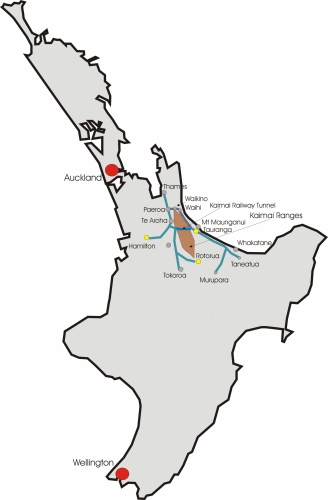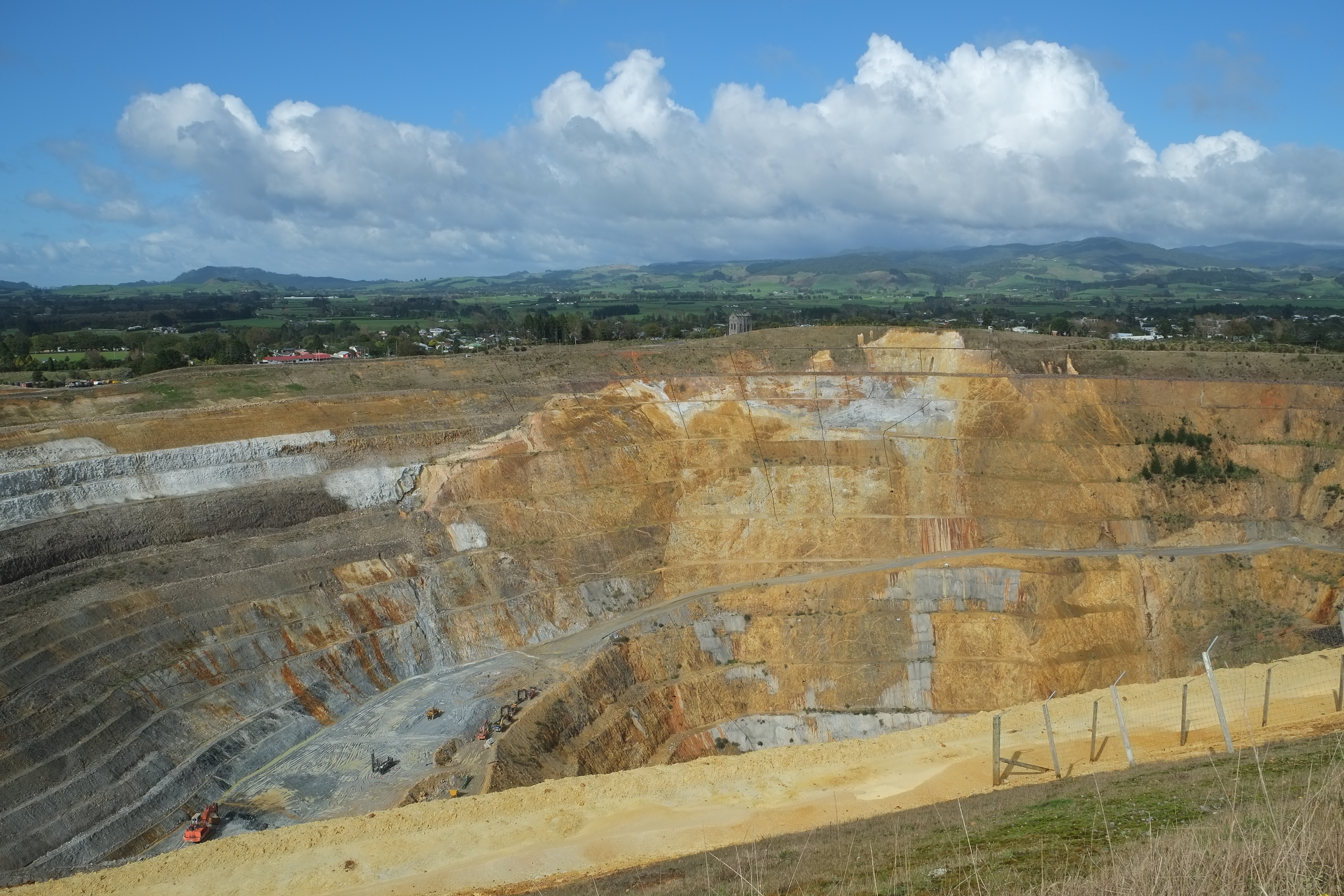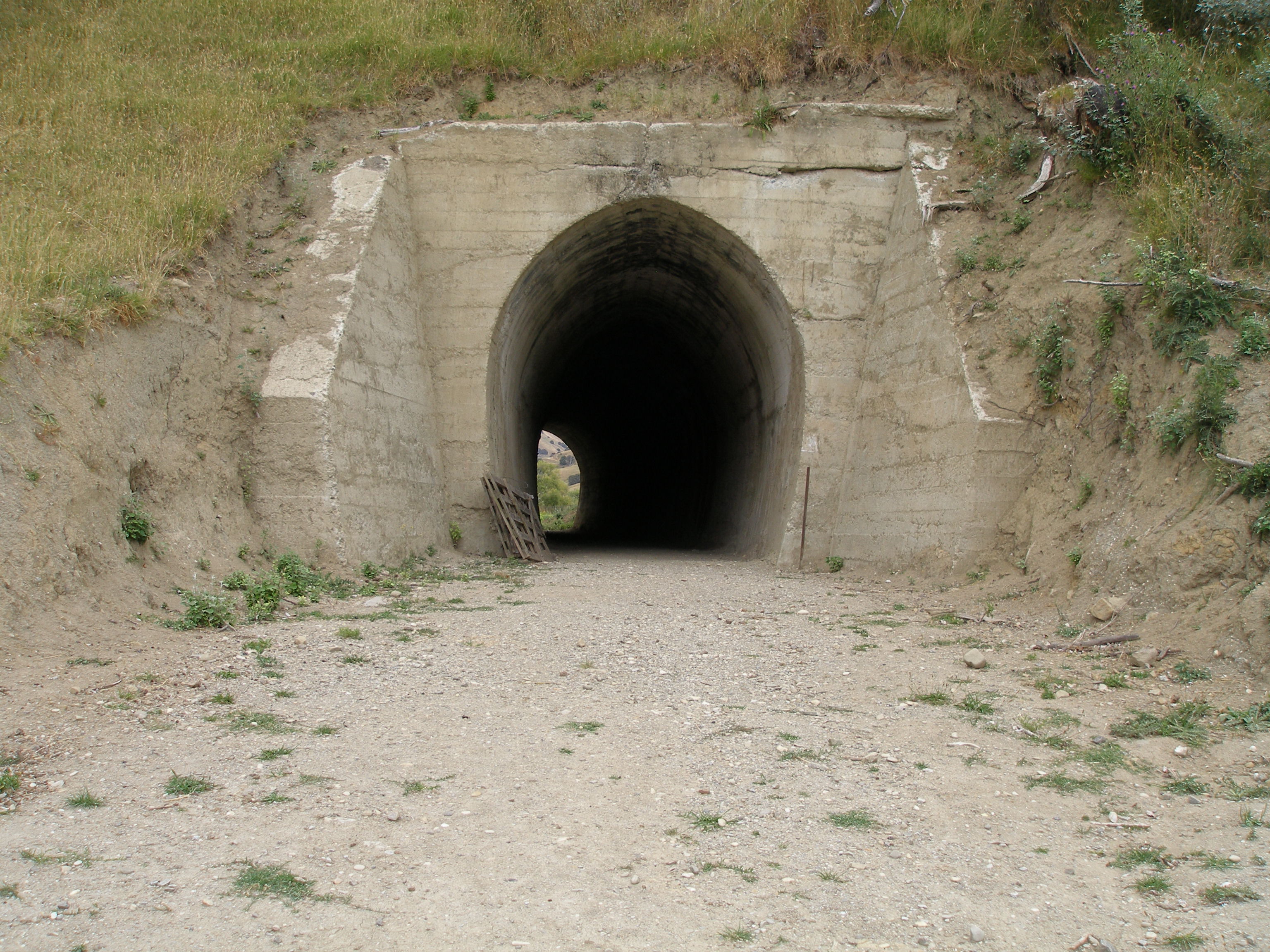|
East Coast Main Trunk
The East Coast Main Trunk (ECMT) is a railway line in the North Island of New Zealand, originally running between Hamilton and Taneatua via Tauranga, connecting the Waikato with the Bay of Plenty. The ECMT now runs between Hamilton and Kawerau, with a branch line to Taneatua from the junction at Hawkens. The line is built to narrow gauge of , the uniform gauge in New Zealand. It was known as the East Coast Main Trunk Railway until 2011, when the word "Railway" was dropped. History Construction In 1880, the North Island Main Trunk railway had reached Frankton, Hamilton, from Auckland. From there, it was delayed by construction of the original Waikato River bridge (now carrying road traffic as part of Claudelands Road), before the line made its way to Morrinsville in October 1884, Te Aroha in March 1886 and Paeroa in 1898. There were also minor delays, such as in the delivery of totara sleepers. The route to Waihi through the Karangahake Gorge was surveyed in the next few year ... [...More Info...] [...Related Items...] OR: [Wikipedia] [Google] [Baidu] |
Rail Transport In New Zealand
Rail transport in New Zealand is an integral part of New Zealand's transport network, with a nationwide network of of track linking most major cities in the North and South Islands, connected by inter-island rail and road ferries. Rail transport in New Zealand has a particular focus on bulk freight exports and imports, with 19 million net tonnes moved by rail annually, with 99.5% of New Zealand's exports and imports being transported through the country's seaports. Rail transport played an important role in the opening up and development of the hinterland outside of New Zealand's predominantly dispersed and coastal settlements. Starting with the Ferrymead Railway in 1863, most public railway lines were short, built by provincial governments and connected major centres to their nearest seaport (such as Christchurch and its port at Lyttelton Harbour). From the 1870s, the focus shifted to building a nationwide network linking major centres, especially during the Vogel Era of ... [...More Info...] [...Related Items...] OR: [Wikipedia] [Google] [Baidu] |
Waihi
Waihi is a town in Hauraki District in the North Island of New Zealand, especially notable for its history as a gold mine town. The town is at the foot of the Coromandel Peninsula, close to the western end of the Bay of Plenty. The nearby resort town of Waihi Beach, ten kilometres to the east, is often regarded as the westernmost point of the Bay of Plenty region. To the west are the hills of the Kaimai Ranges. Road access from this direction is through the winding Karangahake Gorge road. Waihi has a warm and temperate climate but unusually high rainfall for New Zealand's east coast with an average annual rainfall of 2147 mm. Demographics Waihi covers and had an estimated population of as of with a population density of people per km2. Waihi had a population of 5,403 at the 2018 New Zealand census, an increase of 741 people (15.9%) since the 2013 census, and an increase of 783 people (16.9%) since the 2006 census. There were 2,223 households, comprising 2,604 males ... [...More Info...] [...Related Items...] OR: [Wikipedia] [Google] [Baidu] |
Palmerston North - Gisborne Line
Palmerston may refer to: People * Christie Palmerston (c. 1851–1897), Australian explorer * Several prominent people have borne the title of Viscount Palmerston ** Henry Temple, 1st Viscount Palmerston (c. 1673–1757), Irish nobleman and British politician ** Henry Temple, 2nd Viscount Palmerston (1739–1802), British politician ** Henry John Temple, 3rd Viscount Palmerston (1784–1865), British foreign minister and Prime Minister * Charles P. Anderson (1865–1930), Canadian bishop Places Australia * County of Palmerston, a cadastral division in the Northern Territory * Palmerston, the name used for Darwin, Northern Territory prior to 1911 * Palmerston, Northern Territory, a city near Darwin in Australia * Palmerston, Australian Capital Territory, a suburb of Canberra, Australia * Palmerston, Queensland, a locality in the Cassowary Coast Region, Australia ** East Palmerston, Queensland, a locality in the Cassowary Coast Region, Australia * Cape Palmerston, Queensla ... [...More Info...] [...Related Items...] OR: [Wikipedia] [Google] [Baidu] |
Mōtū
Mōtū is a rural community in the Gisborne District of New Zealand New Zealand ( mi, Aotearoa ) is an island country in the southwestern Pacific Ocean. It consists of two main landmasses—the North Island () and the South Island ()—and over 700 smaller islands. It is the sixth-largest island count ...'s North Island. It is located north of Matawai and State Highway 2. The community is centred around Mōtū River and Mōtū Falls. Education Motu School is a Year 1–8 co-educational state primary school. In 2019, it was a decile 7 school with a roll of 5. References Populated places in the Gisborne District {{Gisborne-geo-stub ... [...More Info...] [...Related Items...] OR: [Wikipedia] [Google] [Baidu] |
Makaraka, New Zealand
Makaraka is an outer suburb of Gisborne, in New Zealand's North Island, located in the west of the city. The suburb features Gisborne's horse-racing circuit, Makaraka Racecourse. It is part of the statistical area of Makaraka-Awapuni, which is covered at Awapuni. Makaraka was settled by dairy farmers in the 19th century. A dairy factory was built in the settlement in 1899. The Tarere Marae, located near Makaraka, is a tribal meeting place of Te Whānau a Iwi, a hapū of Te Aitanga ā Māhaki. It includes Te Aotipu meeting house. Education Makaraka School is a Year 1–6 co-educational public primary school with a roll of as of Railway station From 1902 to 1959 Mākaraka had a railway station on the Moutohora Branch The Moutohora Branch was a branch line railway that formed part of New Zealand's national rail network in Poverty Bay in the North Island of New Zealand. The branch ran for 78 km approximately North-West from Gisborne into the rugged a ... and ... [...More Info...] [...Related Items...] OR: [Wikipedia] [Google] [Baidu] |
Gisborne, New Zealand
Gisborne ( mi, Tūranga-nui-a-Kiwa "Great standing place of Kiwa") is a city in northeastern New Zealand and the largest settlement in the Gisborne District (or Gisborne Region). It has a population of The district council has its headquarters in Whataupoko, in the central city. The settlement was originally known as Turanga and renamed Gisborne in 1870 in honour of New Zealand Colonial Secretary William Gisborne. Early history First arrivals The Gisborne region has been settled for over 700 years. For centuries the region has been inhabited by the tribes of Te Whanau-a-Kai, Ngaariki Kaiputahi, Te Aitanga-a-Mahaki Rongowhakaata, Ngāi Tāmanuhiri and Te Aitanga-a-Hauiti. Their people descend from the voyagers of the Te Ikaroa-a-Rauru, Horouta and Tākitimu waka. East Coast oral traditions offer differing versions of Gisborne's establishment by Māori. One legend recounts that in the 1300s, the great navigator Kiwa landed at the Turanganui River first on the waka Tā ... [...More Info...] [...Related Items...] OR: [Wikipedia] [Google] [Baidu] |
Moutohora Branch
The Moutohora Branch was a branch line railway that formed part of New Zealand's national rail network in Poverty Bay in the North Island of New Zealand. The branch ran for 78 km approximately North-West from Gisborne into the rugged and steep Raukumara Range to the terminus at Moutohora. Construction started in 1900, and the line was opened to Moutohora on 26 November 1917. Built to the New Zealand standard gauge the line was originally intended to become part of a railway to Auckland via Rotorua, and later as part of an East Coast Main Trunk Railway running from Gisborne to Pokeno by way of Ōpōtiki, Taneatua, Tauranga, and Paeroa. This comprehensive scheme never came to pass, and the branch line it subsequently became was closed in March 1959. The branch had four names during its lifetime. Initially, it was authorised as a Gisborne to Rotorua line and labelled as such in the Public Works Statement until 1910. From then, while isolated from the rest of the NZR ... [...More Info...] [...Related Items...] OR: [Wikipedia] [Google] [Baidu] |
Taneatua Express
The ''Taneatua Express'' was an express passenger train operated by the New Zealand Railways Department that ran between Auckland and Taneatua in the Bay of Plenty, serving centres such as Tauranga and Te Puke. It commenced in 1929 and operated until 1959. Introduction The immediate precursor to the ''Taneatua Express'', and a victim of its introduction, was the ''Thames Express'', which operated from Auckland to Thames. The East Coast Main Trunk Railway, in its first incarnation, diverged from the Thames Branch in Paeroa (the Thames Branch later included the line from Morrinsville to Paeroa with the opening of the Kaimai Tunnel deviation), and when it opened in 1928, Thames swiftly declined in status as a railway terminus as services began operating through to the Bay of Plenty. A direct passenger service between Auckland and the Bay of Plenty terminus in Taneatua commenced upon the East Coast Main Trunk's opening, rendering the ''Thames Express'' superfluous as the ''Taneatua' ... [...More Info...] [...Related Items...] OR: [Wikipedia] [Google] [Baidu] |
Te Puke
Te Puke is a town located 18 kilometres southeast of Tauranga in the Western Bay of Plenty of New Zealand. It is particularly well-known for the cultivation of Kiwifruit. Te Puke is close to Tauranga, Mount Maunganui, Papamoa, and Maketu, which are all coastal towns/cities, as well as the small townships of Waitangi, Manoeka, Pongakawa, and Paengaroa. The Tauranga Eastern Link, completed in 2015, moved State Highway 2 away from Te Puke and removed large volumes of traffic from its streets. The town's name comes from the Māori language, and should be pronounced "teh-pook-ee", not "te-pyook". It translates to ''the hill''; it is on a hill near the Papamoa Hills. Demographics Te Puke covers and had an estimated population of as of with a population density of people per km2. Te Puke had a population of 8,688 at the 2018 New Zealand census, an increase of 1,296 people (17.5%) since the 2013 census, and an increase of 1,728 people (24.8%) since the 2006 census. There ... [...More Info...] [...Related Items...] OR: [Wikipedia] [Google] [Baidu] |
Tauranga
Tauranga () is a coastal city in the Bay of Plenty region and the fifth most populous city of New Zealand, with an urban population of , or roughly 3% of the national population. It was settled by Māori late in the 13th century, colonised by Europeans in the early 19th century, and was constituted as a city in 1963. The city lies in the north-western corner of the Bay of Plenty, on the south-eastern edge of Tauranga Harbour. The city extends over an area of , and encompasses the communities of Bethlehem, New Zealand, Bethlehem, on the south-western outskirts of the city; Greerton, on the southern outskirts of the city; Matua, west of the central city overlooking Tauranga Harbour; Maungatapu; Mount Maunganui, located north of the central city across the harbour facing the Bay of Plenty; Otūmoetai; Papamoa, Tauranga's largest suburb, located on the Bay of Plenty; Tauranga City; Tauranga South; and Welcome Bay. Tauranga is one of New Zealand's main centres for business, interna ... [...More Info...] [...Related Items...] OR: [Wikipedia] [Google] [Baidu] |
Tahawai
Tahawai is a rural community in the Western Bay of Plenty District and Bay of Plenty Region of New Zealand's North Island. runs through it. A peninsula on the eastern side of the area in Tauranga Harbour ends with the small settlements of Tuapiro Point, Ongare Point and Kauri Point, with a walkway between the latter two. A smaller peninsula further north ends at Tanners Point. Demographics Tahawai statistical area, which includes Tanners Point, Ongare Point and Kauri Point, covers and had an estimated population of as of with a population density of people per km2. Tahawai had a population of 1,833 at the 2018 New Zealand census, an increase of 126 people (7.4%) since the 2013 census, and an increase of 90 people (5.2%) since the 2006 census. There were 738 households, comprising 942 males and 891 females, giving a sex ratio of 1.06 males per female. The median age was 54.5 years (compared with 37.4 years nationally), with 234 people (12.8%) aged under 15 years, 22 ... [...More Info...] [...Related Items...] OR: [Wikipedia] [Google] [Baidu] |






